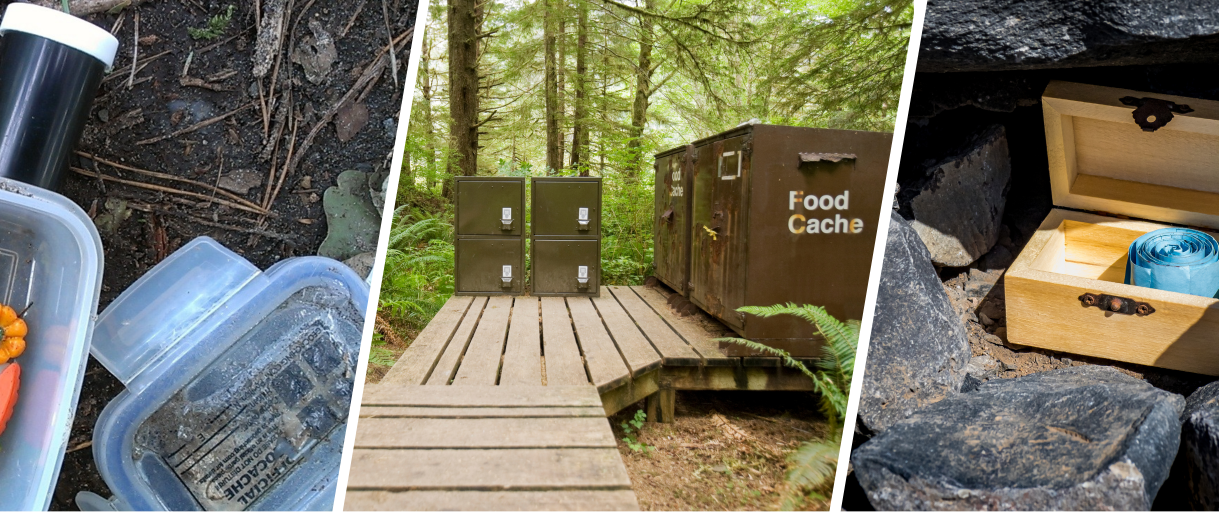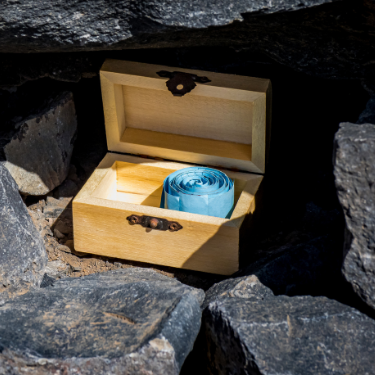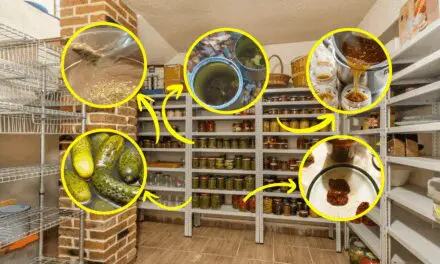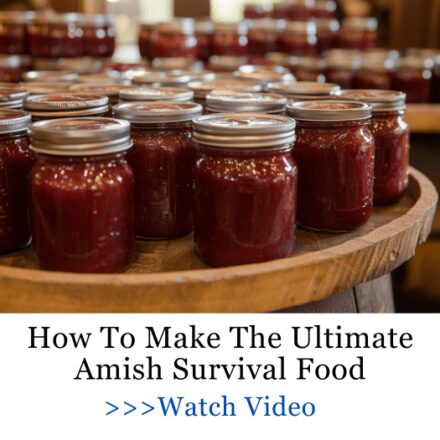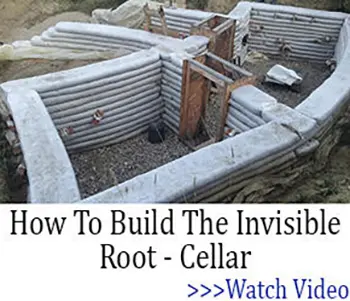Caching isn’t just a survival tactic. It’s a time-tested strategy that has helped humans preserve food and essentials for thousands of years. From Stone Age hunters storing meat underwater to modern homesteaders tucking gear into outbuildings, rock piles, or even birdhouses, caching gives you a hidden advantage when the unexpected hits. If you want to keep your critical gear and provisions safe, accessible, and ready for any crisis, understanding the basics of caching is a must.
This guide breaks down everything you need to know to stash your essentials like a pro.
Why Cache on Your Own Property?
Caching is about making sure you have essential supplies ready when shortages hit or emergencies make certain items hard to find. While caches are often hidden away from your home, there are also smart ways to store things safely on your own property—like in your backyard—where they stay protected and out of sight.
As a homesteader, chances are you already stock food, tools, and medicine. But what happens if someone raids your pantry or your barn catches fire? What if authorities come knocking with confiscation orders?
Having a few discreet, backup stashes scattered across your land can mean the difference between barely getting by and staying truly self-reliant.
And you don’t have to trek miles to retrieve these caches. They’re right there on your property… just not where anyone expects to find them.
The Best Cache Containers for Backyard Stashing
Choosing the right container is key to keeping your cache safe, dry, and durable over time. Most cache containers are solid, waterproof, and built to last. Typically, they’re buried underground, tucked under rocks, or hidden in caves. Here are some popular options you can use in your own backyard:
🔩Large PVC Tubes with Caps at Both Ends
PVC tubes, around 8 to 10 inches in diameter, are a favorite for many caches. Sealed with caps—and sometimes glued for extra waterproofing—these tubes range from 4 to 8 feet long and are buried horizontally. They can hold everything from stacks of canned foods to rifles and ammunition, tools, hardware, or clothing. You can dedicate multiple tubes for specific categories like medical supplies, sewing kits, or other essential gear. Paint them a dull color and they’ll disappear into the landscape.
🪣 5-Gallon Plastic Buckets
Another popular choice, 5-gallon plastic buckets come with screw-on or compression-fit lids. Adding a silicone bead around the rim can help keep them waterproof for the long haul. These buckets are versatile—you can stash anything from ammo and handguns to food (often bought in bulk buckets), clothing, bedding, or other necessities.
Stash a few under the woodpile or inside a haystack. Add a silicone sealant around the lid for waterproofing. They’re easy to bury near a tree line or cover with debris in an unused corner of the yard.
🎯 Ammo Cans
Ammo cans aren’t just for ammunition—they make handy cache containers for any small items that fit. Just keep in mind that metal cans can rust over time, especially when buried. For long-term storage, wrap them in plastic bags and seal tightly with tape. Even a couple of heavy-duty garbage bags can add valuable protection.
For small-item caches tucked into wall cavities, buried inside firewood stacks, or slid into the rafters of a shed. Just double-bag and seal tightly to avoid rust over time.
What to Cache
Basically, cache anything you think you will really need in an emergency. This includes prescription medications, over-the-counter (OTC) medicines, and general first aid supplies. Extra clothing, sturdy shoes or boots, and canned, preserved, or specially packaged foods are must-haves. Don’t forget personal care items like soap, shampoo, toothpaste, and feminine hygiene products.
➡️ An Ingenious Way to Stockpile Prescription Medicines, Including Insulin Without a Prescription
Essentially, you’d cache anything you normally keep stored at home or in your basement, but in secret, secure locations. Caching along travel routes or at remote sites becomes especially important if you need to travel on foot or face roadblocks. Even something like gasoline in a safe, sealed plastic container can make a huge difference for mobility and survival.
Beyond these basics, consider including: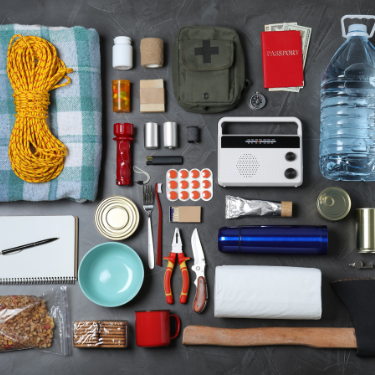
- Water purification supplies (tablets, filters, or drops)
- Batteries and solar chargers for small electronics
- Fire-starting tools like waterproof matches, lighters, and fire steels
- Basic tools such as a multi-tool, knife, and small hand tools
- Seeds for quick-growing vegetables or herbs
- Fuel sources like gasoline or propane in properly stored containers
- Cooking essentials including lightweight pots, utensils, and portable stoves
- Communication devices like a hand-crank or battery-powered radio
- Important documents sealed in waterproof bags (IDs, maps, permits)
- Animal care supplies if you keep livestock—basic meds, feed supplements, or wound care items
- Comfort items such as blankets, tarps, or ponchos
➡️ How to Stockpile 272 pounds of long-lasting food with just $5
But Did You Ever Think Of These?
Most people think of food, ammo, and first aid when they hear the word “cache.” But often it’s the unexpected items, the ones nobody thinks to stash, that can make the biggest difference.
Here are some unconventional but incredibly useful items you can hide in plain sight, right on your property:
📡 A Wi-Fi-Killing Faraday Flashdrive
A tiny USB stick with encrypted files? Sure. But tuck it inside a hollowed-out solar light in your garden—complete with a Faraday layer—and now you’ve got a stealthy way to store everything from bugout routes to scanned IDs, survival manuals, and crypto keys.
🔥 A Fire Kit Inside a Fake Sprinkler Head
It looks like part of your irrigation system—but inside, you’ve stashed a ferro rod, waterproof matches, and a couple of Vaseline-soaked cotton balls. This little firestarter cache could save your life in a power outage or cold-weather bugout.
🔋 AA Batteries in a Birdhouse Roof
A backyard birdhouse doesn’t just shelter the sparrows. In the roof, you’ve tucked away a watertight pouch with spare batteries, solar power banks, and a USB flashlight. Birds keep the nosy folks away, and you’ve got off-grid power at arm’s reach.
💵 Cash and Silver Coins in a Gutter Downspout
Gutter downspouts are hollow, usually go unnoticed, and can be capped with a small stash of emergency money or pre-1965 silver coins (real barter gold in a collapse). Tape them in a small tube, wedge it in, and it’ll sit there for years untouched.
🧷 Mini Survival Kit in a Hose Nozzle
Unscrew the back of an old garden hose nozzle, gut the interior, and suddenly it’s a capsule for fishing line, hooks, water tabs, razor blades, and micro tools. Screw it back on, toss it in your shed, and it blends right in.
📖 Hollowed-Out Brick With Emergency Gear
Yes, you read that right. Use a rotary tool to hollow out the back of a standard brick—just enough to fit a compact multi-tool, $50 in small bills, and a few water purification tablets. Mortar it into your fire pit or garden wall and no one’s the wiser.
🥩 Vacuum-Sealed Jerky in the Dog Food Bin
Your dog won’t mind sharing. Slide in a vacuum-sealed bag of protein-packed jerky or survival bars under the kibble layer and you’ve got high-energy food right there in plain sight. Bonus: few people will go poking around in pet supplies.
🧦 Wool Socks and Gloves in a PVC Fence Post
Cold-weather gear isn’t just for comfort—it’s life-saving. Cut the top off a vinyl fence post cap, stuff in an emergency pair of wool socks, gloves, and a knit cap in a dry bag, then seal it. It’s right by your walkway and nobody will ever guess.
⚙️ Gun Parts and Cleaning Kit in a Tool Handle
That cheap garden trowel with a hollow plastic handle? It’s the perfect place to hide spare springs, cleaning rods, or even a broken-down .22 bolt. Leave it in your garage or tool shed. It looks like just another forgotten tool.
💊 Prescription Meds in a Deodorant Stick
Clean it out, twist the bottom, and boom: secret compartment. Fill it with blister packs of antibiotics, painkillers, or even insulin pens in a mini insulated pouch. Toss it in a bathroom drawer or travel bag and forget it… until you really need it.
🐦 Bird Bath Rain Catcher With a Hidden Filter
That concrete bird bath? Hollow the base. Inside, store a Sawyer Mini or LifeStraw wrapped in a dry bag. It’s literally a water filter hidden in a water source. Add a backup bottle of purification tablets, and you’re set.
📦 “Returned Package” Cache on the Porch
Tape up a beat-up Amazon box, write “RETURN TO SENDER” on it, and stash a backup phone, charger, and solar bank inside. Leave it in your garage or porch corner. Looks like trash—holds your last line of off-grid comms.
Where to Cache
The fundamental problem with hiding anything is remembering where you hid it, especially if you’re hiding a lot of stuff in various locations. A map makes sense but so do landmarks or RFID chips that can actually signal where something is. The only problem with RFID chips is they might have a short lifecycle, and it assumes the technology to find them is still functional. That’s why landmarks are worth thinking about and could include: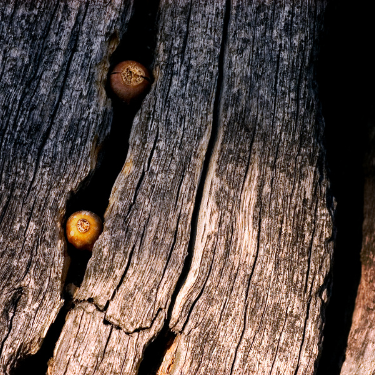
- Next to a large tree that is unique and stands out in a landscape.
- Next to a large rock that seems out of place and easy to see.
- A pile or circle of rocks at the top of a hill. In fact, a circle of rocks with some charred wood thrown in the center could make it look like the site of an old campfire rather than an intriguing place for someone to investigate or dig.
- Caves are also a possibility, but people are often intrigued by caves and may stumble across your cache (literally).
All you’re trying to do is give yourself a memory peg that you will recognize and remember. It still makes sense to map your caches, but when you get there, you’ll still need to find it.
Cache Fails
The fastest way to lose a cache is to bury it in the wrong place—and flooding is the silent killer most people overlook. Low ground might seem convenient, but after just one heavy rain, your carefully packed cache can end up underwater, buried in mud, and practically unrecoverable. Picture yourself waist-deep in freezing runoff, fumbling through muck, trying to salvage supplies you thought were safe. That’s not just inconvenient—that’s dangerous.
Then there’s the most obvious threat: someone else finds it. You’d be shocked how often a poorly camouflaged site gives you away. A patch of freshly turned soil, disturbed leaves, or even a footprint is enough to blow your cover. If it looks out of place, it will draw attention. Every inch around your cache should be blended, silent, forgotten. Leaves, sticks, natural debris—use them like armor.
Don’t underestimate the sun, either. If you’re caching food in a spot that bakes in the heat, you’re risking spoilage without even realizing it. Even underground, heat builds up. Always bury food caches in the shade—beneath trees, near rock cover, or beside cool structures. Because once the shelf-life is gone, your food becomes dead weight.
And whatever you do, never let anyone see you burying it. All it takes is one curious neighbor or hiker, one silent observer in the treeline, and you’ve compromised your whole plan. Bury at night, in bad weather, or when you’re absolutely certain no one’s around. If someone sees you digging, they will come back. Maybe tomorrow. Maybe with friends. Maybe with a badge.
Lastly—don’t lie to yourself about your memory. You think you’ll remember the spot. You won’t. Not after six months. Not after two seasons of growth and weather. Mark it discreetly. Log it somewhere safe. Because a forgotten cache is no better than a lost one, and when the grid goes down, guessing isn’t an option.
🛑 Your Cache Is Useless If You Get This Wrong
Too many caches rot underground—sun-baked, waterlogged, or full of food that’s already gone bad before the real crisis even starts. That’s why I don’t bury a single thing until I’ve followed the system laid out inside A Navy SEAL’s Bug-In Guide.
This isn’t theory—it’s a real-world blueprint for building a low-cost, no-refrigeration stockpile that holds up when everything else falls apart.
Perfect for caching. Perfect for blackouts. Perfect for survival.
📦 Claim your copy now at 68% OFF 👇👇👇
But act fast—once it’s gone, it’s gone. No reprints. No second chances.
The guide begins with a clear, no-nonsense plan: how to feed yourself for three full months, day in and day out—breakfast, lunch, and dinner—without refrigeration, electricity, or a trip to the store. Then it scales up, preparing you for six months, and eventually a full year. That’s not just planning—it’s peace of mind.
More importantly, it shows you exactly where to get these foods without going broke. Because stocking up shouldn’t mean emptying your wallet—it should mean quiet confidence when the shelves go bare.
It even includes a day-by-day, meal-by-meal breakdown—around 2,200 calories daily—with everything your body actually needs: protein for muscle, fats for fuel, nutrients for immunity. Not just food, but sustainable survival. Because in a real crisis, guessing is a luxury you can’t afford.
Some other useful tips you’ll find inside include:
- The best canned goods under $1 you should add to your reserves
- A “meal in a jar” that can feed you for a week
- How to make survival food with a 25-year shelf life
- The only seeds you need to stockpile for a crisis
- What item to remove from your pantry immediately
- How to hide your remaining power during a blackout
- Great Depression-era foods we’ll be relying on again soon
- Using a car battery to power radios
- And the truth about taking expired medications
This guide doesn’t just help you survive—it helps you stay strong, clear-headed, and prepared for anything, when the world around you starts slipping.
The author printed only a limited batch, and they are moving fast. This isn’t like an eBook you can grab later—once it’s gone, you’re out of luck.
🎯 If you’re serious about keeping your family fed and your cache ready—this guide is essential.
🥫 Grab your copy now while it’s still available 🧰🍽️
How to Manage Serious Wounds With Household Items
Sneaky Inside Secrets to Surviving Martial Law From the People Who Enforce It (Video)
Power Outage: How To Survive The First 7 Days
High-Risk Looter Places You Have To Stay Away From In A Crisis
How to Make Your Own DIY Homestead Defense Kit

